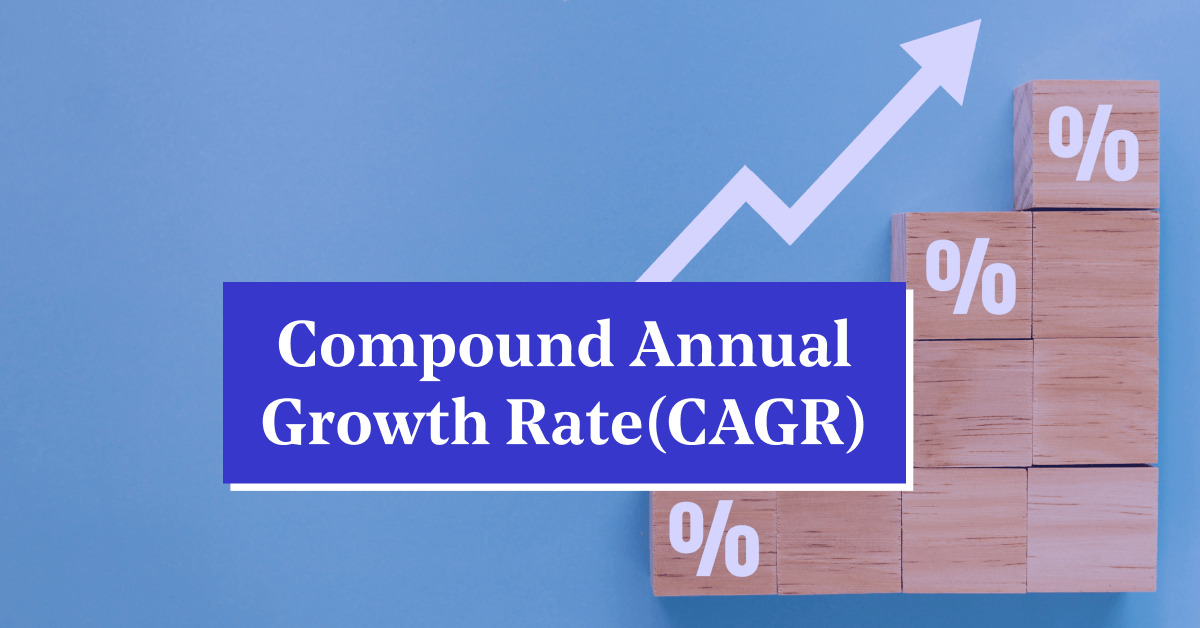Calculating the Compound Annual Growth Rate (CAGR) can be a powerful way for investors to understand how their investments are performing over time. CAGR is often used to smooth out the volatility in returns and provides a more straightforward view of growth over a period. Moreover, understanding Step-Up SIP meaning and its implications can further enhance one’s investment strategy in the Indian financial market.
Understanding CAGR
CAGR is a measure used to describe the mean annual growth rate of an investment over a specified time duration longer than one year. Unlike absolute returns, which can be misleading due to fluctuations, CAGR provides a smoothed annual rate, assuming reinvestment of returns. It is particularly useful when comparing the growth potential of investments.
Formula for Calculating CAGR
The formula for calculating CAGR is:
[ text{CAGR} = left( frac{text{Ending Value}}{text{Beginning Value}} right)^{frac{1}{n}} – 1 ]
Where:
– The Ending Value is the value of the investment at the end of the period.
– The Beginning Value is the value of the investment at the start.
– n is the number of years.
Example Calculation in Indian Rupees
Consider an investment of ₹1,00,000 made at the beginning of 2018, which grows to ₹2,00,000 by the end of 2022. To calculate the CAGR:
[ text{CAGR} = left( frac{2,00,000}{1,00,000} right)^{frac{1}{5}} – 1 ]
[ text{CAGR} = (2)^{0.2} – 1 ]
[ text{CAGR} = 1.1487 – 1 ]
[ text{CAGR} = 0.1487 text{ or } 14.87% ]
This means the investment compounded annually at a rate of 14.87% over the five years.
Importance of CAGR in Investment Tracking
CAGR provides a realistic picture of how investments are growing yearly, considering compounding effects. When assessing fund performance, comparing CAGR of different funds can be insightful, especially when evaluating their past performance against market conditions.
Step-Up SIP Meaning
Systematic Investment Plan (SIP) is a disciplined way of investing small amounts at regular intervals. A Step-Up SIP, also known as a top-up SIP, allows investors to enhance their SIP contributions by a fixed amount or percentage periodically, usually yearly.
How Step-Up SIP Works
Suppose an investor starts with a monthly SIP of ₹5,000 with an annual step-up of 10%. The contributions for subsequent years increase as follows:
– Year 1: ₹5,000 per month
– Year 2: ₹5,500 per month (₹5,000 + 10% of ₹5,000)
– Year 3: ₹6,050 per month
This approach not only increases the corpus over time but also leverages the power of compounding, resulting in substantial returns.
Using CAGR with Step-Up SIP
Calculating CAGR with a Step-Up SIP is slightly different as there are multiple cash inflows over the period. While CAGR can describe the returns at the fund level post the investment term, knowing the growth rate of the individual investments (monthly SIPs) might require more sophisticated financial models.
Tracking Investment Growth Using CAGR
An adept use of CAGR involves differentiating between good and mediocre performance over time. Cross-referencing CAGR with benchmarks or inflation rates is essential to ensure that returns are meaningful.
Things to Keep in Mind
While CAGR is a vital metric, it does not account for market volatility and risks associated with the financial market. Step-Up SIP can amplify returns but requires thorough planning and financial discipline.
Disclaimer
Investors must weigh all potential risks and advantages before making decisions in the Indian financial market. Financial markets are inherently uncertain and subject to fluctuations.
Summary:
CAGR simplifies the understanding of an investment’s annual growth rate by providing a smooth compounded growth measure, devoid of market volatility impact. Calculating CAGR involves the initial and final investment values and the number of years the investment spanned. For example, an investment in Indian Rupees growing from ₹1,00,000 to ₹2,00,000 over five years yields a CAGR of 14.87%.
Alongside this, exploring the Step Up SIP meaning reveals a potent investment strategy where one increases their SIP contributions over time. This approach leverages investment growth through enhanced periodic contributions, expanding the future corpus disproportionately due to augmented compounding.
Together, CAGR and Step-Up SIP offer a comprehensive framework for tracking and boosting investment growth. However, financial decisions should always be made with caution, after evaluating market trends and risks associated with the Indian financial markets. Calculations are an essential tool, but not the sole determinant of investment success.



